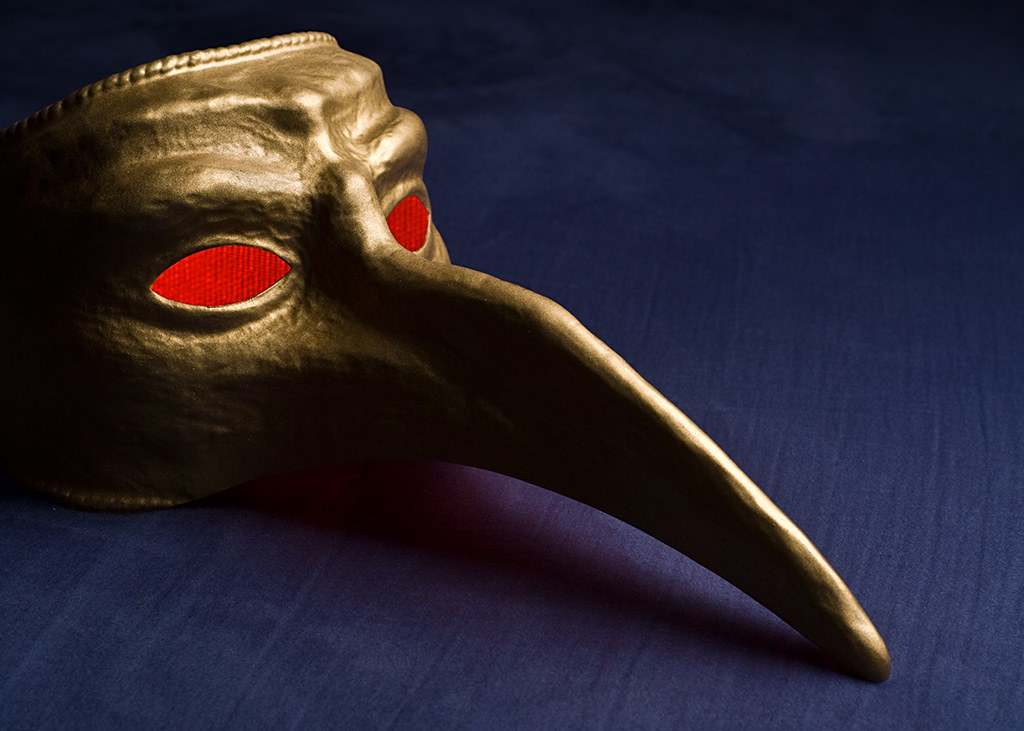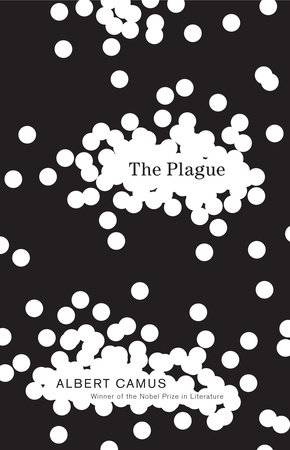Electric Lit is committed to publishing—and paying writers—through the pandemic without any layoffs or pay cuts. Please consider supporting us during this difficult time. Donate here.
.
A doctor who recognizes the first symptoms of an illness that threatens the population. Authorities who dismiss his warnings as fearmongering, until an epidemic is inevitable. A city that goes into quarantine, with no one able to enter or leave. The residents who must find a way to keep on living as death stalks them invisibly.
This isn’t Wuhan, in eastern China, where COVID-19 is thought to have originated. It’s Oran, on the Algerian coast, in the 1940s, as described by Albert Camus in his novel The Plague. Although the story of Oran’s plague is a product of Camus’ imagination, it can nevertheless help us understand our current crisis—not as one of cures, vaccines, and quarantines, but as a preexisting emergency that is now reaching new depths.
The Plague focuses on Bernard Rieux, a doctor in Oran, then part of colonial French Algeria, who first warns the city’s prefect of an impending epidemic of bubonic plague. Initially ignored, Rieux is later appointed head of an auxiliary hospital which opens to accommodate the overflow of patients after the metropole in Paris puts Oran in a state of indefinite quarantine. So begins an almost yearlong lockdown, during which the people of Oran suffer from both sickness and isolation, with violence, corruption, and ill-fated escape attempts breaking out. All the while, Rieux and his partners attempt to fight the plague with sterilization and serums, but Camus repeatedly suggests that, rather than being beaten, the disease eventually only retreats of its own accord.
The Plague draws deeply on Camus’ personal experience, as historian Tony Judt explains in his introduction to the Penguin Classics edition (reprinted in The Guardian). Born in Algeria, Camus began collecting material for The Plague in Oran in 1941. Suffering from tuberculosis, he sought treatment the following year in central France, where he was moored, isolated from his mother and wife, for the duration of World War II. Camus joined the resistance movement to the Nazi occupation and, after the liberation of France, returned to his novel, which was published in 1947.
Camus uses the epidemic as a lens through which to dissect the crises of his time—and we may do the same.
In The Plague, Camus uses the epidemic as a lens through which to dissect the crises of his time—and we may do the same. COVID-19 is undoubtedly a global health emergency, defying existing vaccines and conventional containment methods, but it also reveals much deeper, longer standing issues in the United States. So many columns have been dedicated to calling out our shambolic health-care system that it seems unnecessary to recite the number of those uninsured, the lack of providers, the skewering incentive of profit, etc., etc. Beyond the realm of medicine, there is the stark economic reality: The pandemic has lead to record-breaking unemployment claims, but the effects of those job losses are compounded by the numbers of people who, in 2018, were the unable to cover a sudden $400 expense (39 percent) or pay their monthly bills (17 percent). Politically, less than half of voters believe the country is adequately prepared to deal with the pandemic, which tracks with historic lows of public trust in government since 2014. Socially, COVID-19 reveals the most grotesque contradictions: more than 1.5 million people in prison and 700,000 in jails unable to follow basic protective measures, such as handwashing and social distancing.
The standard reading of The Plague is as an allegory for the French resistance movement, a tale of valiant though impossible struggle. Beyond the connection to Camus’ personal history, this interpretation was also advanced by his play, The State of Siege, which many still consider a theatrical accompaniment to the novel and features a personification of the disease reminiscent of a gestapo officer. But The Plague itself offers a more nuanced message than anti-fascism, as significant as that may be.
While Bernard Rieux is The Plague’s central protagonist, and later revealed to be its narrator too, Camus’ beliefs are most explicitly delivered through the character of Jean Tarrou. A former communist revolutionary from France who is whiling away his disillusionment in Oran when the quarantine is announced, Tarrou aids Rieux by organizing volunteer sanitation workers to fight the disease’s spread. The novel advances through the two characters’ perspectives, via Rieux’s recollections and Tarrou’s diary entries, sections of which read as if they are a continuation of Camus’ philosophical work on absurdism—the desire to find meaning in a meaningless world:
Query: How contrive not to waste one’s time? Answer: By being fully aware of it all the while. Ways in which this can be done: By spending one’s days on an uneasy chair in a dentist’s waiting-room; by remaining on one’s balcony all a Sunday afternoon; by listening to lectures in a language one doesn’t know; by traveling by the longest and least-convenient train routes, and of course standing all the way; by lining up at the box-office of theaters and then not buying a seat; and so forth.
Tarrou also directly addresses the plague as a metaphor for something much larger and longer-standing than the epidemic. One evening, sitting on a terrace overlooking the city to the sea, Tarrou tells Rieux:
I had plague already, long before I came to this town and encountered it here. Which is tantamount to saying I’m like everybody else. Only there are some people who don’t know it, or feel at ease in that condition.
Tarrou goes on to clarify that he isn’t referring to the bubonic plague, but to the condoing of murder—which amounts to the same thing: death. He saw this “plague” in his father, who was a prosecutor arguing for executing criminals, just as he saw it in some of his communist comrades with an authoritarian bend, who claimed to be fighting for a better world, but also committed cold-blooded murder. From this disillusionment comes Tarrou’s only certainty: “All I maintain is that on this earth there are pestilences and there are victims, and it’s up to us, so far as possible, not to join forces with the pestilences.” And so Tarrou chose to throw his lot in with the people of Oran, a strange city where he knew no one, helping them fight off a disease that ultimately claims his life.
The plague only reveals what is already there, like a virus lying dormant.
Writing in the 1940s, Camus uses Tarrou to diagnose the plague all around him. He sees it in the fascists, of course, as well as their French collaborators. But, in the character of Tarrou’s father, he also indicts the liberal French Third Republic that preceded the Vichy Government, and the Fourth Republic that followed it too, for their legalistic murders. Tarrou’s own history incriminates the communists, as he vividly describes a firing squad led by revolutionaries in Hungary—a possible reference to the Red Terror in the short-lived Hungarian Soviet Republic in 1919, but certainly to Stalinism more generally. Camus uses the plague to scrutinize the crises of his time, from the remnants of fascism, to the re-establishment of liberalism, to the expansion of authoritarian communism. The plague only reveals what is already there, like a virus lying dormant.
If The Plague gives us a fuller diagnosis of our crises, it also suggests a simple, yet painstaking cure. In his soliloquy, Tarrou admits to knowing only a few, very basic things: that we all have the plague within us, that the plague will claim its victims, and that if we acknowledge this, we must side with the victims against the plague. Whether or not we carry COVID-19, we have helped build, or at least acquiesced to, a society in which the economic, political, and social conditions allow the virus to burn like a wildfire, threatening to consume so many lives. If we acknowledge this, then we must side with the victims against COVID-19 however possible, whether by supporting striking workers, defending tenants from eviction, demanding the release of prisoners, or other means altogether. This will not end the crisis—as Tarrou claims, “it was never over, and there would be more victims, because that was in the order of things”—but it’s fighting that’s important. As Tarrou tells Rieux: “This epidemic has taught me nothing new, except that I must fight at your side.”

